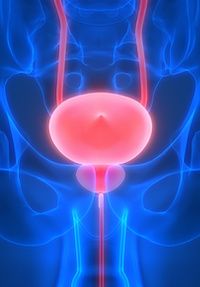Article
The evolving landscape of urethral bulking agents: Current practices in review
Author(s):
Key Takeaways
- Urethral bulking agents for SUI include particulate and non-particulate options, each with unique biophysical properties affecting efficacy and safety.
- Macroplastique® and Bulkamid® demonstrate promising long-term durability, with Bulkamid® showing a favorable safety profile.
Yu Zheng, MD, and Eric Rovner, MD, physicans in the Department of Urology, Medical University of South Carolina provided an important apprasial of urethral bulking agents for stress urinary incontience (SUI) in women in a recently published review. Doctors Zheng and Rovner’s review focused describing past and current bulking agents based on durability, safety and effectiveness. The review concludes that an optimal bulking agent has not currently been indentified, however, several options for treatment exist. The article was published in July of 2022, in the Journal of Current Urology Reports.
Current Bulking Agents
Current treatments include either particulate or non-particulate agents, each with their own biophysical properties that affect efficacy and safety.1
Overall, the ideal urethral bulking agent for female stress incontinence has yet to be identified and more RCTs are needed comparing bulking agents to each other. Currently available agents have acceptable short-term and medium-term efficacy with few adverse events.

Examples of current particulate agents include Macroplastique®, Coaptite®, and Durasphere®. Non-particulate bulking agents include Bulkamid®. Few studies have compared particulate and non-particulate bulking efficacy to one another. Rather studies often compare the current agent in use to Contigen®, the first urethral bulking agent approved by the FDA. Contigen® was the most studied and widely used bulking agent for several years due to ease of administration and tolerability but this product is no longer produced.1
Macroplastique®: Is proven to be safe and efficacious for the treatment of SUI. It compares well to Contigen® and promisingly, a few studies have found long-term durability. Serious adverse events are rare, with two cases of urethral erosion reported.2 The most common adverse events reported are UTI, dysuria, urgency, and transient urinary retention.1
Coaptite®: Is a safe urethral bulking agent with similar efficacy to Contigen®, although studies are limited by sparse data comparing the product to other bulking agents and long-term data is limited.1
Serious adverse events are rare, but reports of erosion through the vaginal wall, prolapse of urethral mucosa have been observed. Common adverse events include temporary urinary retention requiring catheterization, dysuria, urinary tract injection, and hematuria.3,4 Overall, while effective, observed rates of success have shown to decline over time.1
Durasphere®: Like other particulate bulking agents, continence rates are comparable between its counterparts as well as to Contigen®. Studies of Durasphere® have found progressive loss of efficacy over time similar to Coaptite®. This product’s adverse event profile follows those of its counterparts described above.1
Bulkamid®: Studies show similar short-term and long-term efficacy to other urethral bulking agents. Furthermore, a few studies have found long-term durability up to 3–7 years.5 Reported adverse events are generally minor and similar to available products on the market. Bulkamid® may have a slight advantage in its safety profile as there have been no reported cases of erosion or migration of the product to other parts of the body.1
An Optimal Treatment Option
The authors note that evidence evaluating bulking agents has increased over time but there is no definitive data suggesting product superiority of one agent over another. Furthermore, current AUA/SUFU guidelines do not recommend any one product over the others.1
In addition to the paucity of studies comparing bulking agents to one another, few studies compare urethral bulking agents to other treatment modalities such as pelvic floor physiotherapy, or slings such as midurethral polypropylene or fascial slings which are viewed as the gold standard treatment option for SUI. While slings are both effective and durable, surgical complications associated with such procedures do exist.1
Overall, the ideal urethral bulking agent for female stress incontinence has yet to be identified and more RCTs are needed comparing bulking agents to each other. Currently available agents have acceptable short-term and medium-term efficacy with few adverse events.1
References
1. Zheng Y, Rovner E. Update on Urethral Bulking for Stress Urinary Incontinence in Women. Curr Urol Rep. 2022;23(10):203-209. doi:10.1007/s11934-022-01099-5
2. Ghoniem G, Corcos J, Comiter C, Bernhard P, Westney OL, Herschorn S. Cross-linked polydimethylsiloxane injection for female stress urinary incontinence: results of a multicenter, randomized, controlled, singleblind study. J Urol. 2009;181(1):204–10.
3. Mayer RD, Dmochowski RR, Appell RA, Sand PK, Klimberg IW, Jacoby K, et al. Multicenter prospective randomized 52-week trial of calcium hydroxylapatite versus bovine dermal collagen for treatment of stress urinary incontinence. Urology. 2007;69(5):876–80.
4. Palma PCR, Riccetto CLZ, Martins MHT, Herrmann V, de Fraga R, Billis A, et al. Massive prolapse of the urethral mucosa following periurethral injection of calcium hydroxylapatite for stress urinary incontinence. Int Urogynecol J Pelvic Floor Dysfunct. 2006;17(6):670–1.
5. Brosche T, Kuhn A, Lobodasch K, Sokol ER. Seven-year efficacy and safety outcomes of Bulkamid for the treatment of stress urinary incontinence. Neurourol Urodyn. 2021;40(1):502–8.

















